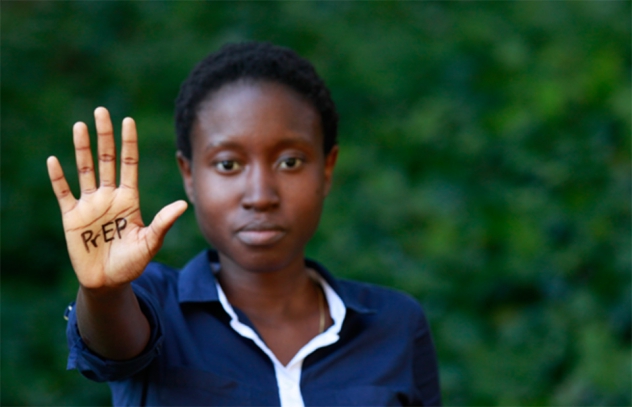国連合同エイズ計画(UNAIDS)の世界エイズデーキャンペーンで今週は、曝露前予防投薬(PrEP)の集中週間になっていることから、キャンペーン特設サイトには11月1日付けでPrEP解説のFeature Story(特集記事)が掲載されました。その日本語仮訳です。HATプロジェクトのブログにも同じものを載せてあります。
コンビネーション予防パッケージの有力な新手段として登場したPrEPの潜在的能力を最大限引き出したいという趣旨ですね(あれ? タイトルのまんまだった、悪しからず)。
《現在ではオーストラリア、フランス、ケニア、ノルウェー、南アフリカ、米国で積極的に国がPrEPプログラムに取り組んでいる。ボツワナは承認のための規制を検討し、実施計画も作成している。また、タイとジンバブエもPrEP普及のためのガイドライン作りを進めている。さらに世界各地で20以上のプログラムがPrEP使用の検討を進めている》
日本のお医者さんたちもこうした動きにあおられている面があります。世界の動きに遅れるなという感じでしょうか。日本の流行の現状を考えると、PrEPに関してはじっくり構え、世界から少々遅れていても差し支えないような感じが個人的にはしますが、時間もお金もかけて国際会議などに出ていると、こうしちゃいられないという気分になってくるのでしょうか。
UNAIDSはあくまでコンドームの普及など他の予防手段と組み合わせていく必要があると指摘しています。また、最後に『PrEPはすべての人を対象にするものではないし、永久に続けるものでもない。定期的なフォローアップの中で、他の性感染症の診断と治療を含めた性の健康に関する検討をより広範に行い、適切なコンビネーションHIV予防戦略と避妊についても適宜、話し合っていく必要がある』とも指摘しています。
このあたりも含め、しつこいようですが、個人的には、導入に消極的です。ただし、昨日も書いたように、パンドラの箱のふたが世界的に開いちゃった以上、もう止まらないよ、という事情もあるのでしょうから、体を張って阻止しなければという気にもなれません。他の予防手段や支援策を疎かにしたり、邪魔したりしないという条件付き(といいますか、現状の無関心がもたらすリスクを打破するという意味では、コミュニティレベルでの支援策や社会的な対応にももっと理解を示し、力を入れるという取引き条件付き)なら導入論もやむなしという感じでしょうか。

HIV予防の新手段の潜在力を最大限に生かす:PrEP 2016.11.1
曝露前予防投薬(PrEP)― 最もよく使われているのはテノホビル・エムトリシタビン合剤を経口で毎日1錠服用― は、きちんと服用を続ければHIV感染予防に極めて効果がある。
PrEPは、HIV陰性だが感染の高いリスクにさらされている人を対象に選択することが推奨されている。最もPrEPによる利益が大きく受けるのは、HIV陽性率が高く、しかも治療を受けずにいる人が多いうえ、コンドームがあまり使用されていない地域の人たちであり、その中にはゲイ男性など他の男性とセックスをする男性、トランスジェンダーの人たち、セックスワーカー、ウイルス量が抑制されていないHIV陽性の人のHIV陰性パートナー、最もHIV流行の影響が大きいサハラ以南のアフリカ地域の若い女性と女児らも含まれる。
PrEPをはじめる人はHIV陰性でなければならず、3カ月に1度はHIVを受けなければならない。PrEP服薬の副作用は軽く、期間も短いことが多い。PrEP開始時にHIV陰性が確認されている人なら、薬剤耐性ウイルスの出現の可能性は非常に低い。
過去2年間、PrEPは急速に広がった。2016年10月現在、30カ国以上で約10万人と推定されており、その半数以上は米国内で占められている。UNAIDSは2020年までに世界全体で300万人がPrEPを使用できるようになることを目指している。
現在ではオーストラリア、フランス、ケニア、ノルウェー、南アフリカ、米国で積極的に国がPrEPプログラムに取り組んでいる。ボツワナは承認のための規制を検討し、実施計画も作成している。また、タイとジンバブエもPrEP普及のためのガイドライン作りを進めている。さらに世界各地で20以上のプログラムがPrEP使用の検討を進めている。
しかし、すでに国のプログラムが存在するところでも受け入れ状況は一様ではなく、PrEPの利益を最も受けるべき人にアクセスが確保されていないことも多い。エイズ対策のアクティビストの多くがこの不平等を批判している。「PrEPは強力であり、弱い立場の人たちに届くようにしなければならない」とヒューマンライツ・キャンペーンのノエル・ゴードンは言う。
効果が証明されている既存の予防オプションにPrEPが新たに加わった。男性用および女性用コンドーム、自発的男性器包皮切除、すべてのHIV陽性者を対象にした抗レトロウイルス治療など他の予防手段と組み合わせて使うべきである。HIV陽性者への抗レトロウイルス治療が効果的に行われれば、治療を受けている人の血液中のウイルス量は検出限界以下に抑えられ、パートナーへの感染リスクはゼロに近くなる。単一で100%の予防効果が得られる予防策はないし、PrEPは他の性感染症や望まない妊娠を防ぐことはできない。コンドームは依然として最も広く利用され、価格も手頃な予防ツールである。PrEPを進めるときには常に、これらの手段の使用促進もあわせて進めていかなければならない。
PrEP選択には、身体的な利益とともに心理的な利益もあり、自分はHIV感染のリスクを避ける力が欠けていると思っている人にとっては、PrEP使用が不安や孤立感を跳ね返す力になることも期待できる。PrEPによって、性に関し、自主的な意思決定ができるようになれば、それもまた感染のリスクを下げることになるかもしれない。また、PrEPがコミュニケーションを改善してパートナーとの関係がより親密になれば、親しいパートナーから暴力を受ける恐れが減り、自己肯定感が高まり、性の健康のすべての面で責任をもった行動をとるようになるかもしれない。
PrEPを提供することは、HIV感染の最も高いリスクにさらされている人たちがより多く、HIVクリニックを訪れ、HIV検査を受け、検査の結果によってPrEPもしくは治療への機会を得られるようにすることにもなる。どちらにせよ、本人にとってもHIV予防にとっても好結果をもたらすのだ。
PrEPは、それぞれの人に合わせて使用できる予防パッケージの中に、もう一つ有力なツールを付け加えることになる。PrEPはすべての人を対象にするものではないし、永久に続けるものでもない。定期的なPrEPのフォローアップでは、他の性感染症の診断と治療を含め性の健康についてより広範に検討し、適切なコンビネーションHIV予防戦略と避妊についても適宜、話し合っていく必要がある。
Maximizing the potential of a new HIV prevention method: PrEP
01 November 2016
Pre-exposure prophylaxis (PrEP)—most often a combination of tenofovir and emtricitabine taken orally as a daily tablet—is extremely effective at preventing HIV infection when taken regularly.
The choice of PrEP is recommended for people who are HIV-negative but at high risk of becoming infected. The people who can benefit most from PrEP—including gay men and other men who have sex with men, transgender people, sex workers, serodiscordant couples before the partner living with HIV becomes virally suppressed and young women and girls in the areas of sub-Saharan Africa most affected by HIV—are located where there are high rates of untreated HIV and inconsistent condom use.
People starting on PrEP must be HIV-negative and undergo repeat HIV testing every three months. The side-effects of taking PrEP are usually mild and short-lived. The risk of developing resistance to PrEP medicines is extremely low, as long as the person is confirmed to be HIV-negative when starting PrEP.
In the past two years, PrEP roll-out has moved quickly. It is estimated that in October 2016 around 100 000 people were using PrEP in more than 30 countries, with the majority of users in the United States of America. The UNAIDS target is for there to be 3 million people on PrEP worldwide by 2020.
There are now active national PrEP programmes in Australia, France, Kenya, Norway, South Africa and the United States. Botswana is pursuing regulatory approval and creating an implementation plan, while Thailand and Zimbabwe are among other countries producing guidelines for PrEP roll-out. In addition, more than 20 projects around the world are exploring the use of PrEP.
However, even where there is an existing national programme, PrEP uptake is unequal and the people who would benefit most do not always gain access. Many activists in the AIDS response continue to criticize this inequality. “PrEP is powerful, it has to reach the disempowered,” said Nöel Gordon of the Human Rights Campaign.
PrEP adds to the package of proven prevention options already available. PrEP should be used in conjunction with other prevention methods, such as male and female condoms, voluntary medical male circumcision and antiretroviral therapy for all people living with HIV. When antiretroviral therapy is effective in a person living with HIV, the virus becomes undetectable in the person’s blood and the risk of transmitting the virus to a partner approaches zero. No single HIV prevention method is 100% protective and PrEP does not prevent other sexually transmitted infections or prevent unintended pregnancy. Condoms remain the most widely available and affordable HIV prevention tool and as such should always be promoted along with PrEP.
The benefits of choosing PrEP can be psychological as well as physical and the use of PrEP may counter the anxiety and isolation felt by some people who feel they lack the ability to control their risk of exposure to HIV. PrEP can give people more autonomy about their sexual decision-making, which may also include risk reduction. PrEP may promote improved communication and intimacy with a partner, reduced fear of intimate partner violence, raised self-esteem and greater engagement with all aspects of sexual health.
Offering PrEP can encourage more people at the highest risk of HIV to attend HIV clinics, undergo HIV testing and access either PrEP or treatment depending on the test result. Either way, the outcome is good for the individual and good for HIV prevention.
PrEP gives us one more tool that we can use to better tailor the prevention package to each person’s individual needs, which can change over time. PrEP is not for everyone and is not for ever. Routine PrEP follow-up involves regular review of broader sexual health, including the diagnosis and treatment of sexually transmitted infections and discussion of appropriate combination HIV prevention strategies and contraception, as appropriate.